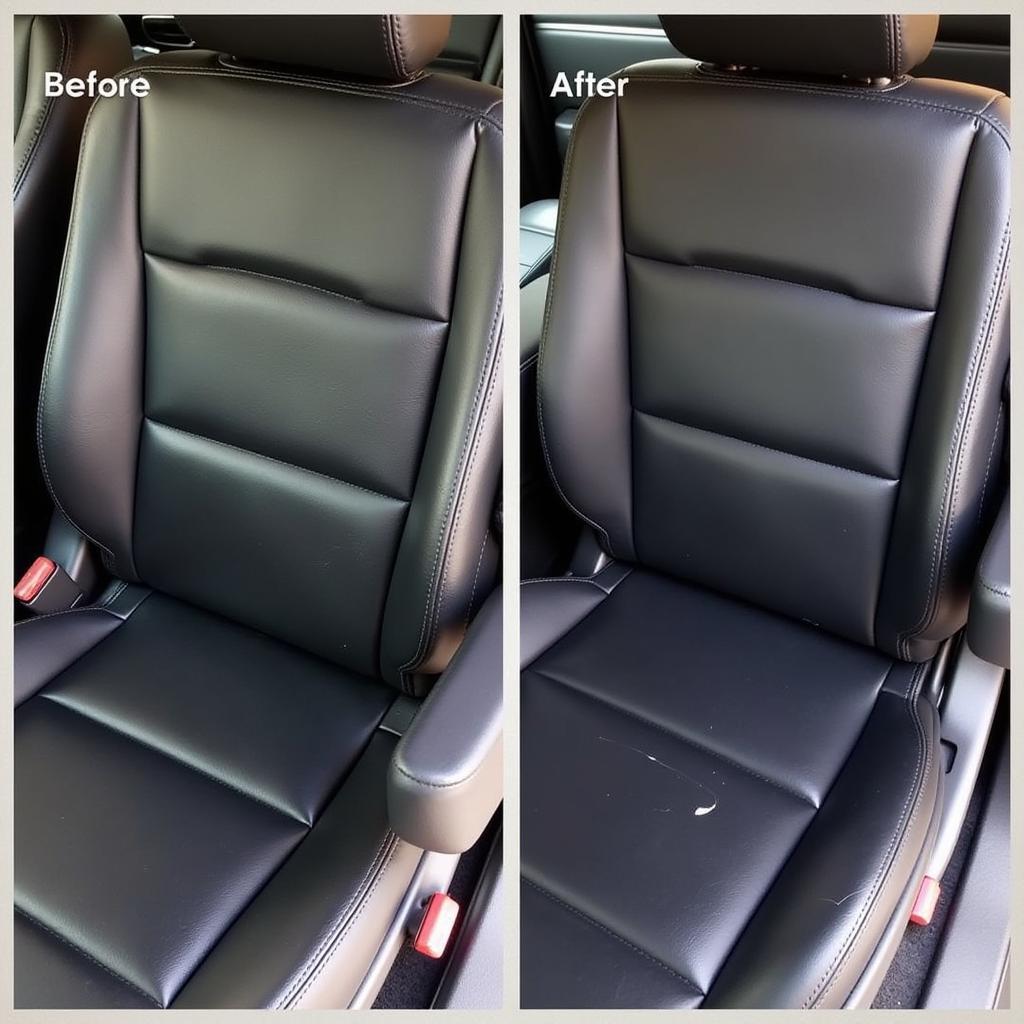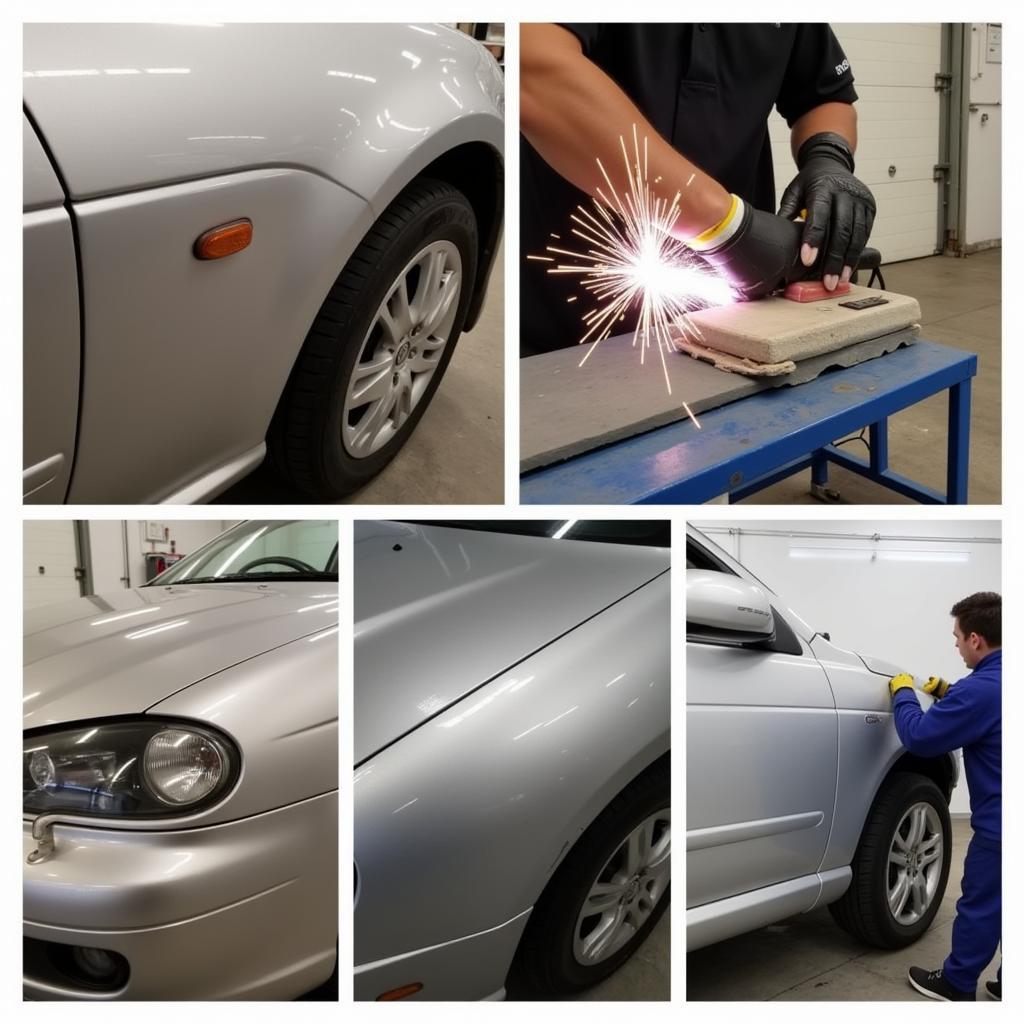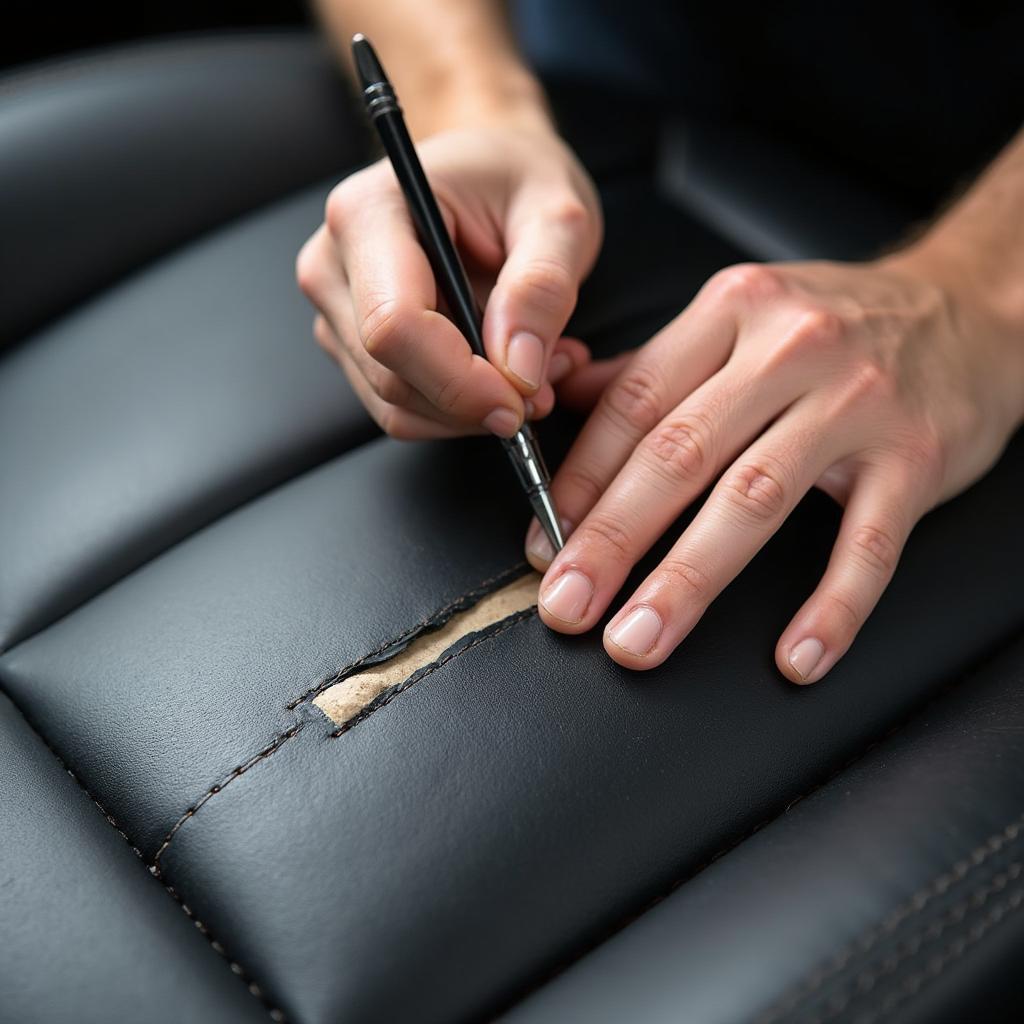
Repairing a tear in car seat leather
Leather car seats are a luxurious addition to any vehicle, adding a touch of class and sophistication. However, leather requires specific care to maintain its pristine appearance. Over time, wear and tear can take a toll, leading to scratches, cracks, and fading. Knowing how to repair car seat leather can save you from costly replacements and keep your interior looking its best.
 Repairing a tear in car seat leather
Repairing a tear in car seat leather
Understanding Leather Damage
Before diving into the repair process, it’s essential to understand the type of damage your leather seats have sustained. Common issues include:
- Scratches: Light surface abrasions that appear as thin white lines.
- Scuffs: Deeper than scratches, often removing the color layer and exposing the fibers beneath.
- Cracks: Breaks in the leather surface caused by drying, aging, or lack of conditioning.
- Tears: Rips or holes in the leather, often caused by sharp objects or excessive force.
- Fading: Loss of color vibrancy due to prolonged exposure to sunlight.
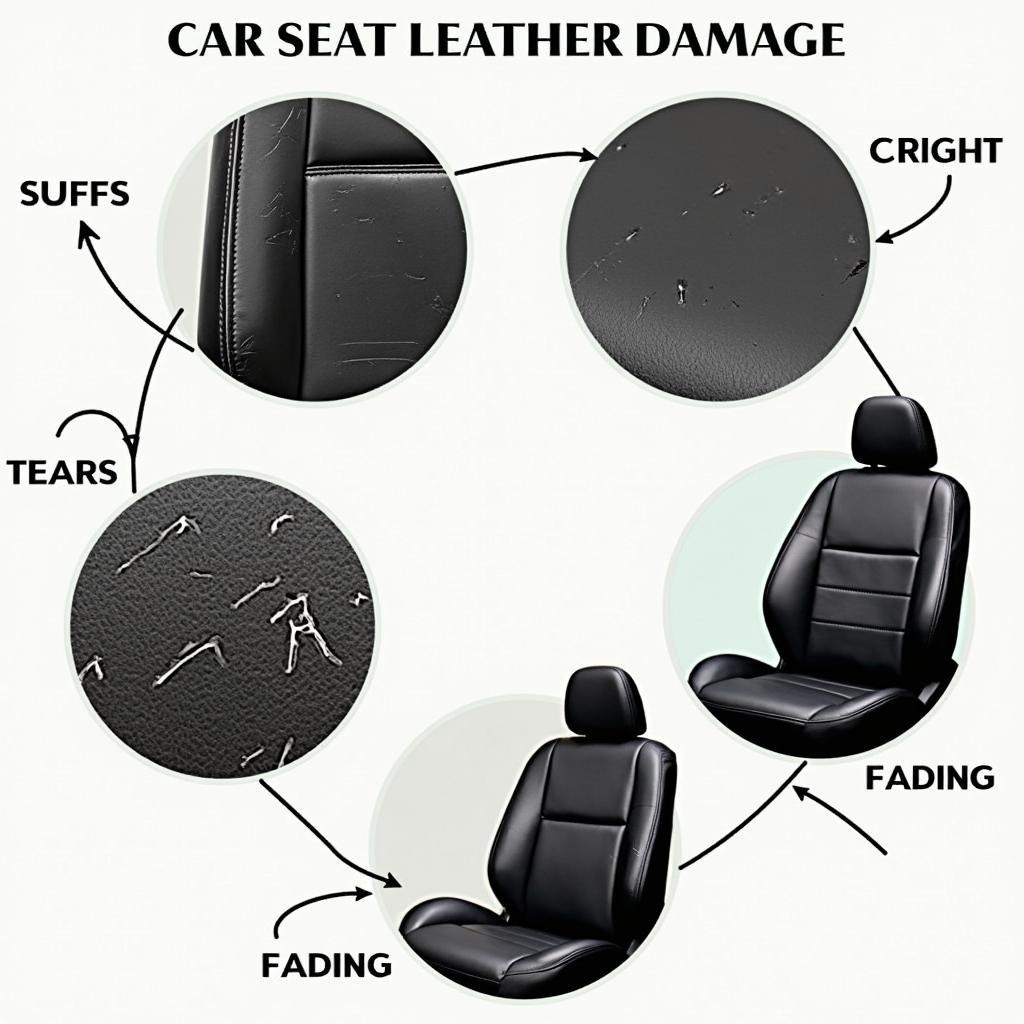 Different types of car seat leather damage
Different types of car seat leather damage
DIY Car Seat Leather Repair
For minor scratches, scuffs, and cracks, you can often achieve impressive results with a DIY approach. Here’s what you’ll need:
- Leather Cleaning Solution: Use a dedicated leather cleaner or a mild soap solution.
- Microfiber Cloths: Gentle on leather and effective at removing dirt and grime.
- Leather Repair Kit: These kits typically include filler, color matching compounds, and various applicators.
- Leather Conditioner: Essential for restoring moisture and preventing future damage.
Step-by-Step Repair Guide:
- Clean the Area: Thoroughly clean the affected area with a leather cleaning solution and a microfiber cloth.
- Assess the Damage: Determine the severity of the damage to select the appropriate repair method from your kit.
- Apply Filler (if needed): For deep scratches, cracks, or tears, use a leather filler to even out the surface. Follow the instructions provided with your specific kit.
- Color Matching: If the damage has removed color, use the color matching compounds in your kit to restore the original shade. Apply in thin layers, allowing each layer to dry completely.
- Apply Leather Conditioner: Once the repair is complete, apply a high-quality leather conditioner to protect the area and keep the leather supple.
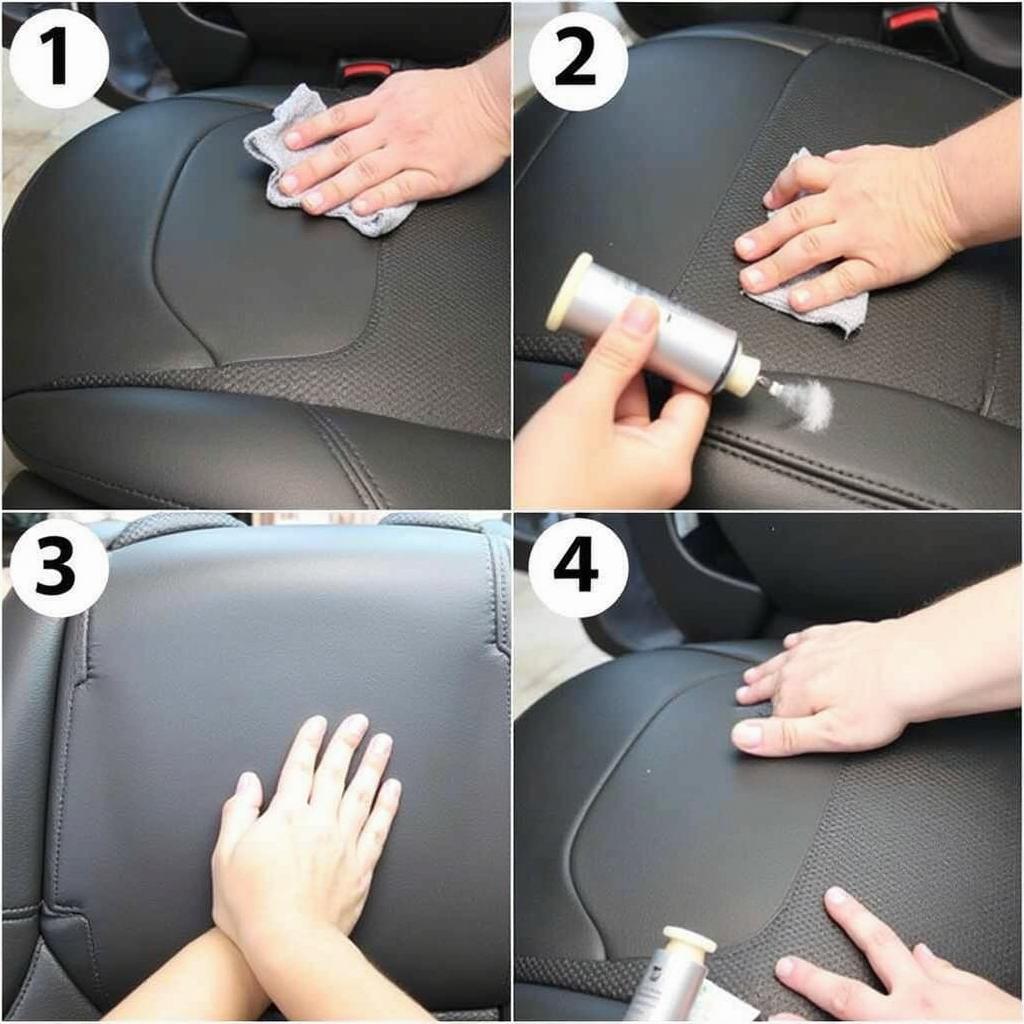 Applying leather conditioner to a car seat
Applying leather conditioner to a car seat
When to Seek Professional Help
While DIY repairs can be effective for minor damage, more severe issues often require professional attention. Consider seeking professional help if:
- The damage is extensive: Large tears, deep cracks, or widespread fading are best handled by experienced technicians.
- You’re uncomfortable with DIY repairs: If you’re unsure about any step of the process, it’s always best to err on the side of caution and consult a professional.
- The leather is delicate: Some types of leather, such as aniline or nubuck, require specialized care and repair techniques.
Preventing Future Damage
Prevention is always better than cure. Here are some tips to prevent future damage to your leather car seats:
- Regular Cleaning: Clean your leather seats regularly with a dedicated leather cleaner to remove dirt, dust, and grime.
- Conditioning is Key: Leather needs moisture to stay supple. Apply a leather conditioner every few months, or more frequently in dry climates.
- Sun Protection: Prolonged sun exposure can cause leather to fade and crack. Use sunshades or park in shaded areas whenever possible.
- Avoid Sharp Objects: Be mindful of what comes into contact with your leather seats. Avoid placing sharp objects on the seats to prevent tears and punctures.
By following these simple tips and taking prompt action to address any damage, you can keep your car seat leather looking its best for years to come.
FAQ
Q: Can I use regular household cleaners on my leather car seats?
A: No, it’s not recommended to use household cleaners on leather car seats. These cleaners often contain harsh chemicals that can strip the leather of its natural oils, leading to drying, cracking, and discoloration.
Q: How often should I condition my leather car seats?
A: It’s generally recommended to condition your leather car seats every three to six months. However, if you live in a dry climate or frequently park your car in direct sunlight, you may need to condition them more often.
Q: Can I dye my leather car seats a different color?
A: While it’s technically possible to dye leather car seats, it’s a complex process that’s best left to professionals. Attempting to dye leather yourself can result in uneven color, staining, and damage to the material.
Q: My leather car seats are feeling sticky. What should I do?
A: Sticky leather car seats are often a sign of product buildup. This can happen if you’ve been using too much leather conditioner or using the wrong type of cleaner. To remove the stickiness, you can try wiping down the seats with a mild soap and water solution, followed by a thorough cleaning with a dedicated leather cleaner.
Q: My leather car seats have a bad odor. How can I remove it?
A: Unpleasant odors in leather car seats can be caused by spills, pet accidents, or simply trapped moisture. To eliminate odors, start by cleaning the affected area with a leather cleaner. You can then try using a specialized leather odor remover or sprinkle baking soda on the seats, leaving it overnight to absorb the odor. Vacuum the baking soda thoroughly the next day.
Need Help With Your Car Seat Leather?
We’re here to help! If you have any further questions or need assistance with your car seat leather repair, don’t hesitate to reach out to our expert team. Contact us via WhatsApp at +1(641)206-8880 or email us at [email protected]. Our dedicated customer support team is available 24/7 to provide guidance and support.

